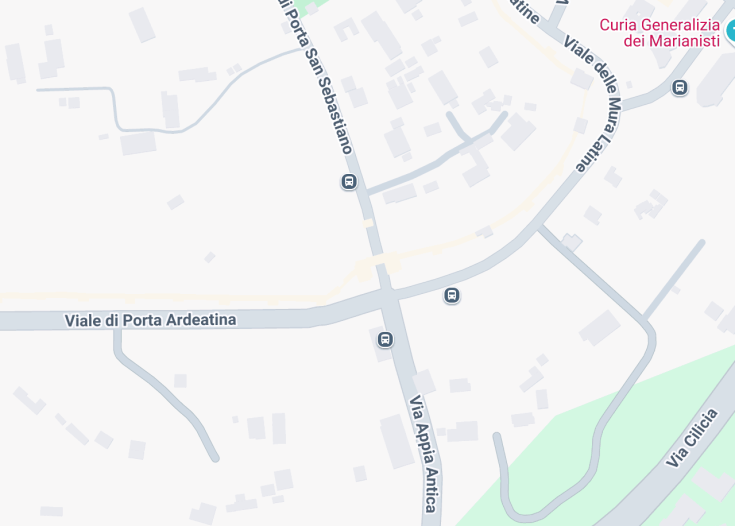The Aurelian Walls, a monumental feat of ancient Roman engineering, stand as a testament to the city’s historical significance and architectural prowess. Constructed in the 3rd century AD, these imposing fortifications originally spanned approximately 19 kilometers, encircling the heart of Rome. The walls not only served as a defensive barrier against invaders but also encapsulated the grandeur of the Roman Empire, preserving a rich legacy that continues to fascinate visitors today.
When visiting the Aurelian Walls, it is advisable to plan a walking tour to appreciate the full scale and beauty of this ancient structure. Early mornings offer a quieter experience, allowing for unobstructed views and ideal photo opportunities.
Consider exploring the various gates of the Aurelian Walls, such as the Porta Metronia and Porta San Giovanni. Each entrance reveals unique architectural features and historical stories, enriching your understanding of Rome’s past while offering splendid vistas of the city’s landscape.
Aurelian Walls: A Testament to Ancient Roman Resilience
The Aurelian Walls in Rome, Italy, are a remarkable feat of ancient engineering, originally constructed in the 3rd century AD. These imposing fortifications stretched approximately 19 kilometers and surrounded the city, protecting it from invaders during a turbulent period in Roman history. Composed of large limestone blocks and brick, the walls stand as a striking reminder of the city’s past and its enduring legacy.
Today, the Aurelian Walls attract tourists not just for their historical significance but also for their stunning vistas of the city. Visitors can explore various sections of the walls, some of which remain remarkably well-preserved. The surrounding areas offer beautiful parks and viewpoints, making it an ideal spot for pictures or leisurely walks. The walls also provide a unique perspective on Rome’s transformation from ancient times to the vibrant capital it is today, merging past and present in a captivating way.
Experience the History: Walking Along the Aurelian Walls
Walking along the Aurelian Walls offers an immersive journey through history. With several well-preserved gates, including the famous Porta San Giovanni, visitors can appreciate the architectural grandeur of these ancient structures.
Activities to Enjoy:
- Guided Tours – Learn about the history and significance of the walls through expertly guided tours.
- Photography – Capture breathtaking views of Rome from strategic vantage points along the walls.
- Nature Walks – Enjoy the surrounding green spaces, perfect for a peaceful stroll away from the bustling city center.
Interesting Fact: The Aurelian Walls and Their Role in Roman Defense
One of the most fascinating aspects of the Aurelian Walls is their role in defending Rome against various threats throughout history. Constructed under the orders of Emperor Aurelian in response to increasing invasions, these walls fortified the city during times of uncertainty. Interestingly, they were built to encircle a much larger area than previous fortifications, showcasing the vulnerability the city faced. Today, the Aurelian Walls not only stand as a protective structure but also as a symbol of Roman strength and resilience.
Discover the Majestic Aurelian Walls in Rome, Italy
The Aurelian Walls are a monumental testament to ancient Roman engineering and resilience, constructed between 271 and 275 AD. These impressive fortifications stretch for a substantial distance, originally designed to protect the city of Rome from external threats. Today, they stand as a striking reminder of the city’s storied past, inviting history enthusiasts, architecture lovers, and casual visitors alike to embark on a journey of exploration.
As you walk alongside these ancient walls, you can expect to encounter various well-preserved sections that showcase the incredible craftsmanship of the Romans. The walls measure up to 8 meters in height and feature impressive gates and watchtowers, some of which remain intact to this day. Each segment of the wall tells a unique story, reflecting the tumultuous history and the evolution of Rome over centuries.
The Aurelian Walls are particularly suitable for history buffs and those seeking a blend of outdoor activity and cultural education. During your visit, don’t miss the opportunity to take a leisurely stroll along the ancient pathways that trace the perimeter of the walls. Along the way, you’ll find picturesque viewpoints that capture the stunning Roman skyline, making for excellent photo opportunities.
Integrating a visit to the Aurelian Walls into a broader tourist itinerary is easy, as they are conveniently located near some of Rome’s most celebrated landmarks. Consider pairing your wall excursion with a trip to the nearby Basilica of San Giovanni in Laterano or the stunning Parco degli Scipioni, which provides a serene space for relaxation after your exploration of the walls. Additionally, indulging in some local Italian cuisine at nearby restaurants can complete your historical adventure.
For added insights, professional guides often recommend visiting the Aurelian Walls during the early morning or late afternoon hours. These times not only offer fewer crowds but also the chance to witness the walls bathed in the golden light of sunrise or sunset, enhancing the magical aura of this historic site.
Best Time to Visit the Aurelian Walls in Rome, Italy
The most favorable time to visit the Aurelian Walls is during the spring (April to June) and fall (September to October) months. During these periods, the weather is pleasantly mild, and the tourist crowds are more manageable compared to the peak summer season. Visitors can truly appreciate the majestic views and historical significance without the discomfort of extreme heat.
Recurring Events and Best Opportunities
One specific event that may enhance your visit is the Roman Historical Reenactment Festival, typically held in May. This festival features actors in period costumes, providing visitors with a lively glimpse into Roman life, which complements the historical backdrop of the Aurelian Walls beautifully.
Accessibility and Limitations
While the Aurelian Walls are generally accessible to all visitors, there are some limitations to keep in mind. Certain areas may have uneven pathways, making it less suitable for individuals with mobility challenges. Ensure to wear comfortable shoes while exploring the grounds.
Accessibility
Limitations
- Restricted hours for guided tours may apply.
- Some sections of the wall may be closed for maintenance.
- Limited restroom facilities available and may require a short walk.
- Due to its historical nature, some areas may be unsupervised.
Notes to visitors
- Photography is allowed but be courteous to fellow visitors.
- Guided tours are highly recommended for comprehensive understanding.
- Bringing your own water supply is advisable, especially in warmer months.
- Check for special events or exhibits before your visit to enrich your experience.
General Information
Planning your visit to the Aurelian Walls will ensure you experience this awe-inspiring monument fully.
Location
The Aurelian Walls can be easily accessed from numerous well-known landmarks, making it a convenient stop on your itinerary. Key points of interest nearby include the impressive Colosseum and the serene Palatine Hill.
Address:
Aurelian Walls, Via di Porta San Sebastiano, 18, 00179 Roma RM, ItalyVisiting Information
The Aurelian Walls can be explored freely, allowing visitors to stroll along various sections of the ancient fortifications at any time during daylight hours. For the best experience, consider visiting in the early morning for quiet enjoyment or late afternoon to soak in the vibrant colors of the sunset.
How to Reach the Aurelian Walls
Write a content block about how to reach Aurelian walls in Rome from the city center or main mobility hub. For the main type of transportation available (example: car, train, bus, etc..), create a content structure like the following:
Car
The Aurelian Walls can be easily reached by car. Parking is available at the adjacent parking structure for a nominal fee. There are also several parking lots nearby.
| Route | Distance | Travel time |
|---|---|---|
| From Rome City Center | 3 miles (5 km) | 15 minutes |
| From Termini Station | 2 miles (3 km) | 10 minutes |
| From Vatican City | 3.5 miles (5.5 km) | 20 minutes |
Public Transport
The site is accessible via public transportation. Take Metro Line B to the Circo Massimo station, which is a short walk from the walls.
| Route | Distance | Travel time |
|---|---|---|
| From Rome City Center | 2 miles (3 km) | 20 minutes |
| From Termini Station | 1.5 miles (2.5 km) | 15 minutes |
Nearby Attractions
- Colosseum – 1.6 miles (2.6 km)
- Roman Forum – 1.8 miles (2.9 km)
- Palatine Hill – 1.9 miles (3 km)
- Basilica of San Giovanni in Laterano – 0.5 miles (0.8 km)
- Santa Maria Maggiore – 1.8 miles (2.9 km)
- Quo Vadis – 0.6 miles (1 km)
- Domus Aurea – 1.7 miles (2.7 km)
- Parco della Caffarella – 1.2 miles (1.9 km)
- Capitoline Museums – 1.6 miles (2.6 km)
- National Roman Museum – 1.9 miles (3 km)
- Catacombs of San Callisto – 2.9 miles (4.6 km)
- Baths of Caracalla – 1 mile (1.5 km)
Common Questions
What is the history of the Aurelian Walls in Rome?
What architectural features can be found at the Aurelian Walls?
- Materials: Constructed predominantly from brick and concrete, the walls were designed for durability and strength.
- Height and Thickness: The walls vary in height, but they typically rise between 8 to 10 meters (26 to 33 feet). Their thickness reaches about 3.5 meters (approximately 11.5 feet) in some areas.
- Towers and Bastions: The walls are punctuated by numerous rectangular and circular towers, which provided strategic viewpoints for guarding entryways and spotting potential threats.
- Gates: Key access points like the Porta Maggiore and Porta San Giovanni served significant roles in connecting the city to surrounding areas. Each gate features intricate details and often showcases decorative reliefs.
- Walkways: There were walkways built along the top of the walls, providing sentries with vantage points to observe and protect the city from invaders.
Overall, the architectural features of the Aurelian Walls not only served practical purposes but also displayed the sophisticated engineering skills of the Romans. Exploring these characteristics enhances the experience of understanding Rome’s rich history and architectural legacy.
What can visitors discover while exploring the Aurelian Walls?
- Historical Insights: The walls provide insight into Roman engineering and military tactics, as well as the historical context of Rome during the third century AD, when they were built.
- Scenic Views: Walking along certain sections of the walls offers stunning views of the city, showcasing landmarks like the Colosseum and various ancient ruins.
- Archaeological Sites: Throughout the surrounding areas, visitors can find archaeological remnants that contribute to understanding ancient Roman life, including remains of the ancient aqueducts and villas.
- Artistic Features: Some sections of the walls feature ancient graffiti and inscriptions, which provide a glimpse into the daily lives and thoughts of the people from that era.
- Guided Tours: Various guided tours are available, offering detailed narratives about the historical significance of each feature, enriching your understanding of the walls
Exploring the Aurelian Walls not only allows visitors to appreciate their grandeur but also helps to connect them with the broader narrative of Rome’s history, making it a worthwhile experience for any history enthusiast or casual visitor alike.
What is the significance of the Aurelian Walls in modern Rome?
- Cultural Heritage: The walls are an essential part of Rome’s cultural heritage, recognized for their architectural brilliance and historical importance. They are a reminder of the city’s grandeur in ancient times and its resilience over the centuries.
- Tourist Attraction: The Aurelian Walls are a popular tourist destination, drawing visitors from around the globe who wish to explore ancient Roman history and admire the impressive structure itself. They offer an engaging link to the city’s past.
- Historical Education: The walls serve as an educational tool, providing scholars, students, and history enthusiasts with insights into the political and military strategies of the Roman Empire, as well as urban development in ancient times.
- Urban Landscape: As part of Rome’s urban landscape, the Aurelian Walls seamlessly blend history with the modern city. Their presence offers a fascinating juxtaposition between ancient and contemporary architectural styles.
- Preservation Efforts: Ongoing preservation efforts not only protect the walls for future generations but also enhance awareness regarding the importance of Rome’s historical sites.
In conclusion, the Aurelian Walls are not merely ancient structures; they are symbols of Rome’s rich history, contributing to the city’s cultural identity and serving as a bridge between past and present.

Are the Aurelian Walls in Rome, Italy worth visiting?
Absolutely! The Aurelian Walls are an impressive historical site that showcases Rome’s ancient engineering and rich past. Built in the 3rd century AD, these walls served to protect the city from invasions and are an embodiment of Roman fortification techniques. Visiting the Aurelian Walls allows tourists to experience the grandeur of Roman architecture up close. As you explore, you’ll gain a deeper understanding of the city’s history and the challenges it faced throughout the centuries. Additionally, the walls are not just remnants; they are beautifully preserved in various sections, offering fantastic photo opportunities and peaceful spots to reflect on Rome’s legacy. In short, if you’re in Rome and appreciate history, the Aurelian Walls are definitely worth your time!









